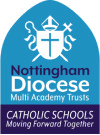During this branch, Year 4 explore how the Bible is an account of God’s relationship with His people, His concern for them, and their response to His love.
Pupils learn that events such as the life of Abraham and his covenant with God take place before the birth of Jesus, in the Old Testament.
We begin the term by becoming familiar with the story of Abraham and the significance of his covenant with God, understanding how we can make covenants with God in our own lives.
Pupils draw parallels between the story of Abraham being commanded to sacrifice his son Isaac and the crucifixion, recognising how Abraham’s story in the Old Testament foreshadows the story of the Cross in the New Testament.
Ahead of our religious workshop on Judaism, Year 4 learn how to link Abraham’s covenant with both Christianity and Judaism.
They recognise that in Judaism, Abraham is the patriarch and his covenant with God is central to the Jewish faith, whereas Christians see Abraham’s faith as a model to follow and view Jesus as a fulfilment of the promises made to Abraham.





